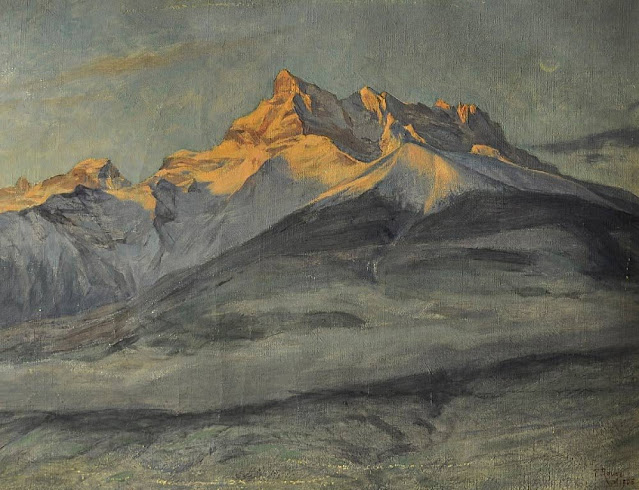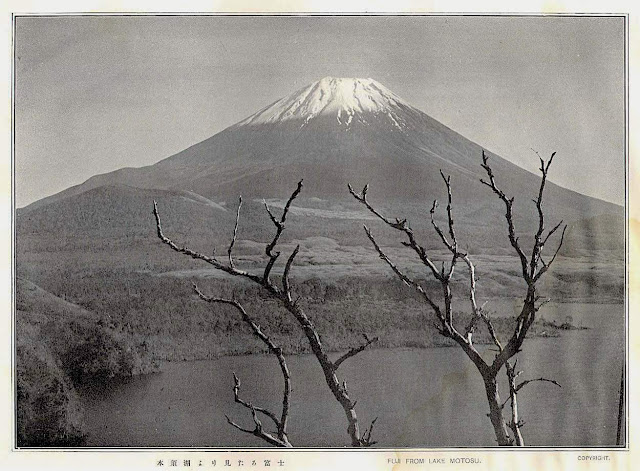ALEXANDER VON HUMBOLDT (1769-1859)
Pico del Teide (3, 718 m -12, 198 ft)
Tenerife - Canari Islands - Spain
In "Intérieur du Cratère du Pic de Teneriffe " Dessin, Alexander von Humboldt
The mountain
Pico del Teide (3,718m - 12,198 ft) (« Teide Peak") is a volcano on
Tenerife in the Canary Islands, Spain. Before the 1495 Spanish
colonization of Tenerife, the native Guanches called the volcano
Echeyde, which in their legends referred to a powerful figure leaving
the volcano, which could turn into hell. El Pico del Teide is the modern
Spanish name.
Its summit is the highest point in Spain and the
highest point above sea level in the islands of the Atlantic. If
measured from its base on the ocean floor, it is at 7,500 m-24,600 ft
the third highest volcano on a volcanic ocean island in the world after
Mauna Kea and Mauna Loa in Hawaii. Its elevation makes Tenerife the
tenth highest island in the world. It remains active: its most recent
eruption occurred in 1909 from the El Chinyero vent on the northwestern
Santiago rift.
Historical volcanic activity on the island is
associated with vents on the Santiago or northwest rift (Boca Cangrejo
in 1492, Montañas Negras in 1706, Narices del Teide or Chahorra in 1798
and El Chinyero in 1909) and the Cordillera Dorsal or northeast rift
(Fasnia in 1704, Siete Fuentes and Arafo in 1705). The 1706 Montañas
Negras eruption destroyed the town and principal port of Garachico, as
well as several smaller villages.
In 1492, Christopher Columbus
reported seeing "a great fire in the Orotava Valley" as he sailed past
Tenerife on his voyage to discover the New World. This was interpreted
as indicating that he had witnessed an eruption there. Radiometric
dating of possible lavas indicates that in 1492 no eruption occurred in
the Orotava Valley, but one did occur from the Boca Cangrejo vent.
The last summit eruption from Teide occurred about the year 850 CE, and
this eruption produced the "Lavas Negras" that cover much of the flanks
of the volcano.
About 150,000 years ago, a much larger explosive eruption occurred, probably of Volcanic Explosivity Index 5.
The United Nations Committee for Disaster Mitigation designated Teide a
Decade Volcano because of its history of destructive eruptions and its
proximity to several large towns, of which the closest are Garachico,
Icod de los Vinos and Puerto de la Cruz. Teide, Pico Viejo and Montaсa
Blanca form the Central Volcanic Complex of Tenerife.
In a
publication of 1626, Sir Edmund Scory, who probably stayed on the island
in the first decades of the 17th century, gives a description of Teide,
in which he notes the suitable paths to the top and the effects the
considerable height causes to the travellers, indicating that the
volcano had been accessed via different routes before the 17th century.
In 1715 the English traveler J. Edens and his party made the ascent and
reported their observations in the journal of the Royal Society in
London.
After the Enlightenment, most of the expeditions that went
to East Africa and the Pacific had Teide as one of the most rewarding
targets. The expedition of Lord George Macartney, George Staunton and
John Barrow in 1792 almost ended in tragedy, as a major snowstorm and
rain swept over them and they failed to reach the peak of Teide, just
barely getting past Montaña Blanca.
During an expedition to
Kilimanjaro, the German adventurer Hans Heinrich Joseph Meyer visited
Teide in 1894 to observe ice conditions on the volcano. He described the
two mountains as "two kings, one rising in the ocean and the other in
the desert and steppes"
The volcano and its surroundings comprise
Teide National Park, which has an area of 18,900 hectares (47,000 acres)
and was named a World Heritage Site by UNESCO on June 28, 2007. Teide
is the most visited natural wonder of Spain, the most visited national
park in Spain and Europe and – by 2015 – the eighth most visited in the
world, with some 3 million visitors yearly. A major international
astronomical observatory is located on the slopes of the mountain.
The cartographer
Friedrich Wilhelm Heinrich Alexander von Humboldt was
a Prussian geographer, naturalist, explorer, and influential proponent
of Romantic philosophy and science. He was the younger brother of the
Prussian minister, philosopher, and linguist Wilhelm von Humboldt
(1767–1835). Humboldt's quantitative work on botanical geography laid
the foundation for the field of biogeography. Humboldt's advocacy of
long-term systematic geophysical measurement laid the foundation for
modern geomagnetic and meteorological monitoring.
Between 1799 and
1804, Humboldt travelled extensively in Latin America, exploring and
describing it for the first time from a modern scientific point of view.
His description of the journey was written up and published in an
enormous set of volumes over 21 years. Humboldt was one of the first
people to propose that the lands bordering the Atlantic Ocean were once
joined (South America and Africa in particular). Humboldt resurrected
the use of the word cosmos from the ancient Greek and assigned it to his
multi-volume treatise, Kosmos, in which he sought to unify diverse
branches of scientific knowledge and culture. This important work also
motivated a holistic perception of the universe as one interacting
entity.
On their way back to Europe from Mexico on their way to the
United States, Humboldt and his fellow scientist Aimé Bonpland stopped
in Cuba for a While. After their first stay in Cuba of three months they
returned the mainland at Cartagena de Indias (now in Colombia), a major
center of trade in northern South America. Ascending the swollen stream
of the Magdalena River to Honda and arrived in Bogotá on July 6, 1801
where they met Spanish botanist José Celestino Mutis, the head of the
Royal Botanical Expedition to New Granada, staying there until September
8, 1801. Mutis was generous with his time and gave Humboldt access to
the huge pictorial record he had compiled since 1783. Humboldt had hopes
of connecting with the French sailing expedition of Baudin, now finally
underway, so Bonpland and Humboldt hurried to Ecuador. They crossed the
frozen ridges of the Cordillera Real, they reached Quito on 6 January
1802, after a tedious and difficult journey.
Their stay in Ecuador
was marked by the ascent of Pichincha and their climb of Chimborazo,
where Humboldt and his party reached an altitude of 19,286 feet (5,878
m). This was a world record at the time, but a thousand feet short of
the summit. Humboldt's journey concluded with an expedition to the
sources of the Amazon en route for Lima, Peru.
At Callao, the main
port for Peru, Humboldt observed the transit of Mercury. On 9 November
and studied the fertilizing properties of guano, rich in nitrogen, the
subsequent introduction of which into Europe was due mainly to his
writings.
___________________________________________
2022 - Wandering Vertexes...
by Francis Rousseau

%20Summit%20of%20Fuji%20Series-%20Ten%20Views%20of%20Fuji-%20Woodblock%20Print.png)
%20-%20Mount%20Haku,%20Kaga%20Province,%20%20Woodblock%20Print,%20%201862-%20in%20Sixty-eight%20Views%20of%20the%20Various%20Provinces,%201862.jpg)















